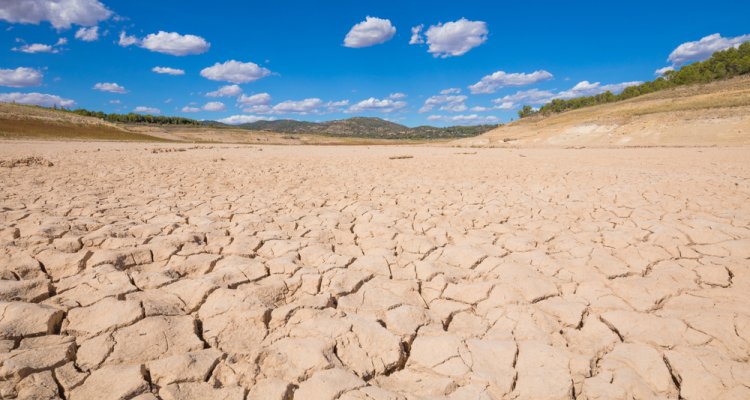
News
Europe is not prepared for rapidly growing climate risks
Europe is the fastest-warming continent in the world and governments are too slow in taking action to reduce these climate risks. According to co-authors Robbert Biesbroek and Simona Pedde of Wageningen University & Research, many of these risks, which threaten our food security and financial stability, among other things, have already reached critical levels and could become catastrophic without a change of mindset towards urgent and decisive action.
Extreme heat, drought, wildfires, and flooding, as experienced in recent years, will worsen in Europe even under optimistic global warming scenarios and affect living conditions throughout the continent. The European Environment Agency (EEA) has published the first-ever European Climate Risk Assessment (EUCRA) to help identify policy priorities for climate change adaptation and for climate-sensitive sectors.
According to the assessment, Europe’s policies and adaptation actions are not keeping pace with the rapidly growing risks. In many cases, incremental adaptation will not be sufficient and, as many measures to improve climate resilience require a long time, urgent action may be needed even for risks that are not yet critical.
Change in mindset is needed
Simona Pedde of the Department of Environmental Sciences: “EUCRA is the first risk assessment to acknowledge that all key climatic risks Europe is facing are driven not only by increases in climatic hazards, but also by how prepared societies are for them. Climatic projections are fundamental to understand what could happen. But planning for future adaptation should look into the fact that many risks are already at a critical level.”
She adds: “Why wait for the materialisation of future climatic projections? With possibilities of tipping points and wildcards, and examples of cascading effects throughout the report, decision-makers need to move from reacting to catastrophic impacts happening after severe floods or drought events to embracing a precautionary approach to climate adaptation. That’s the mindset shift we urgently need.”
More cooperation is key
The EU and its Member States have made considerable progress in understanding the climate risks they face and in preparing for them. National climate risk assessments are increasingly used to inform adaptation policy development. However, societal preparedness is insufficient as policy implementation is lagging behind the rapid increase in risk levels.
As Robbert Biesbroek of the Department of Social Sciences notes: ”The growing gap between the risks of climate change and the slow rate of adaptation action is alarming. Most sectoral policies and plans are not explicit enough when considering future climate risks. We often see high policy ambitions to reduce risks, but these hardly materialise in practice due to lacking political willingness to invest time and resources today to create a sustainable future. Two years ago, we showed in the Intergovernmental Panel on Climate Change (IPCC) report that risks for Europe are widespread, accelerating and impacting every sector and region in Europe. The upcoming European elections in June will be crucially important if and how the recommendations from the European Climate Risk Assessment will be implemented.”
Risks
Ecosystems:
Almost all risks in the ecosystem cluster require urgent or more action, with risks to marine and coastal ecosystems assessed as particularly severe. The EEA report reminds us that ecosystems provide multiple services to people, and therefore these risks have a high potential to cascade to other areas, including food, health, infrastructure, and economy.
Food:
Risks from heat and drought to crop production are already at a critical level in southern Europe, but countries in central Europe are also at risk.Especially, prolonged droughts that affect large areas pose a significant threat on crop production, food security and drinking water supplies.
Health:
Heat is the gravest and most urgent climate risk driver for human health. At greatest risk are specific population groups, such as outdoor workers exposed to extreme heat, the elderly and people living in poorly built dwellings, in areas with a strong urban heat island effect or with inadequate access to cooling.
Infrastructure:
More frequent and extreme weather events increase the risks to Europe’s built environment and critical services, including energy, water and transport. While coastal flood risks have been managed relatively well in Europe, rising sea levels and changes in storm patterns can cause devastating impacts on people, infrastructure and economic activities. In southern Europe, heat and droughts cause substantial risks to energy production, transmission and demand.
Economy and finance:
Europe’s economy and financial systems are facing many climate risks. For example, climate extremes can increase insurance premiums, threaten assets and mortgages, and increase government expenditure and loan costs. The viability of the EU Solidarity Fund is already critically threatened due to costly floods and wildfires in recent years. Worsening climate impacts can also widen private insurance gaps and make low-income households more vulnerable.
About the EUCRA report
The EEA’s EUCRA report builds on and complements the existing knowledge base on climate impacts and risks for Europe, including recent reports by the Intergovernmental Panel on Climate Change (IPCC), the Copernicus Climate Change Service (C3S) and the Joint Research Centre of the European Commission (JRC), as well as outcomes of EU-funded research and development projects and national climate risk assessments. The knowledge in this first-of-its-kind assessment is synthesised with the aim to support strategic policymaking.